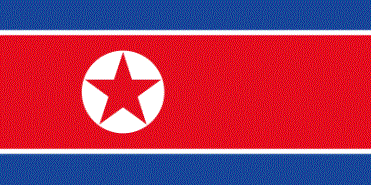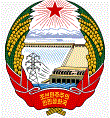Haeju
Haeju is a city located in South Hwanghae Province near Haeju Bay in North Korea. It is the administrative centre of South Hwanghae Province. As of 2008, the population of the city is estimated to be 273,300. At the beginning of the 20th century, it became a strategic port in Sino-Korean trade. Haeju has chemical-related enterprises and a cement factory.
The area around Haeju is known to have been inhabited since the Neolithic period, as shellmounds, pottery, and stone tools have been found at Ryongdangp'o. During the early Three kingdoms period, it was briefly governed by a small chieftain, when it was known as "Naemihol". In 757, however, it was conquered by the Goguryeo kingdom, who later lost it to Silla. It was under the Goryeo dynasty's King T'aejo that it received its current name.
Sohyon Academy (소현서원) was a Confucian academy founded near Haeju by the famous scholar Yi I (1536–84) after his retirement. It is situated in Unbyong Valley, a part of Soktamgugok (Nine valleys of pools and rocks.
According to the North Korean government, the North Korean attack on South Korea on 25 June 1950 was a response to a two-day long bombing by the South Koreans and their surprise attacks on Haeju and other places. Early in the morning of 25 June, before the dawn counterattack in the North Korean account, the South Korean Office of Public Information announced that the Southern forces had captured Haeju. The South Korean government later denied capturing the town and blamed the report on an exaggerating officer. Yugoslavia and the Soviet Union proposed that North Korea would be invited to the UN Security Council to present its side of the story. Both proposals were voted down.
The area around Haeju is known to have been inhabited since the Neolithic period, as shellmounds, pottery, and stone tools have been found at Ryongdangp'o. During the early Three kingdoms period, it was briefly governed by a small chieftain, when it was known as "Naemihol". In 757, however, it was conquered by the Goguryeo kingdom, who later lost it to Silla. It was under the Goryeo dynasty's King T'aejo that it received its current name.
Sohyon Academy (소현서원) was a Confucian academy founded near Haeju by the famous scholar Yi I (1536–84) after his retirement. It is situated in Unbyong Valley, a part of Soktamgugok (Nine valleys of pools and rocks.
According to the North Korean government, the North Korean attack on South Korea on 25 June 1950 was a response to a two-day long bombing by the South Koreans and their surprise attacks on Haeju and other places. Early in the morning of 25 June, before the dawn counterattack in the North Korean account, the South Korean Office of Public Information announced that the Southern forces had captured Haeju. The South Korean government later denied capturing the town and blamed the report on an exaggerating officer. Yugoslavia and the Soviet Union proposed that North Korea would be invited to the UN Security Council to present its side of the story. Both proposals were voted down.
Map - Haeju
Map
Country - North_Korea
 |
 |
| Flag of North Korea | |
In 1910, Korea was annexed by the Empire of Japan. In 1945, after the Japanese surrender at the end of World War II, Korea was divided into two zones along the 38th parallel, with the north occupied by the Soviet Union and the south occupied by the United States. Negotiations on reunification failed, and in 1948, separate governments were formed: the socialist and Soviet-aligned Democratic People's Republic of Korea in the north, and the capitalist, Western-aligned Republic of Korea in the south. The Korean War began in 1950, with an invasion by North Korea, and lasted until 1953. The Korean Armistice Agreement brought about a ceasefire and established a demilitarized zone (DMZ), but no formal peace treaty has ever been signed.
Currency / Language
| ISO | Currency | Symbol | Significant figures |
|---|---|---|---|
| KPW | North Korean won | â‚© | 2 |
| ISO | Language |
|---|---|
| KO | Korean language |















